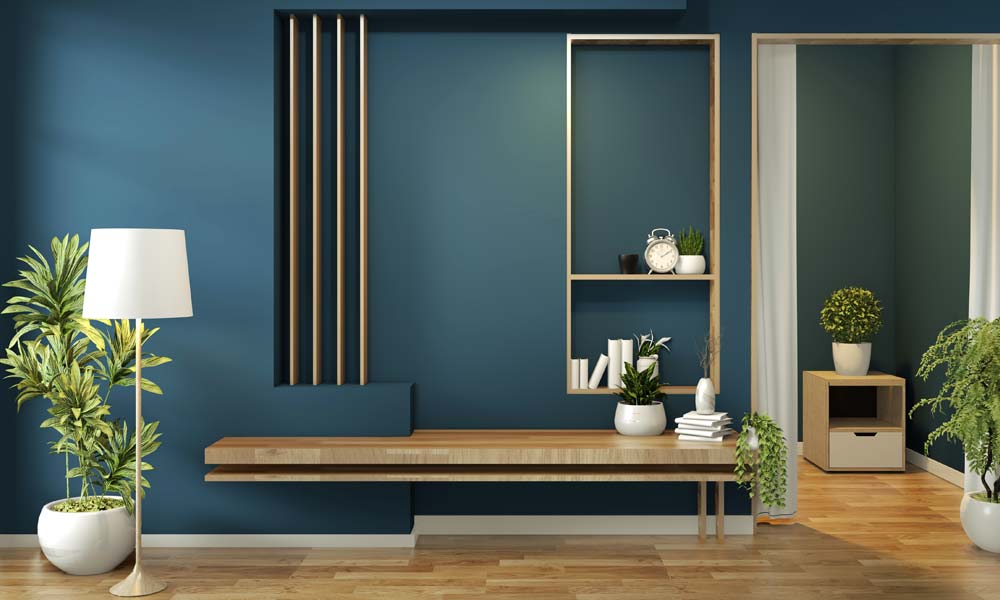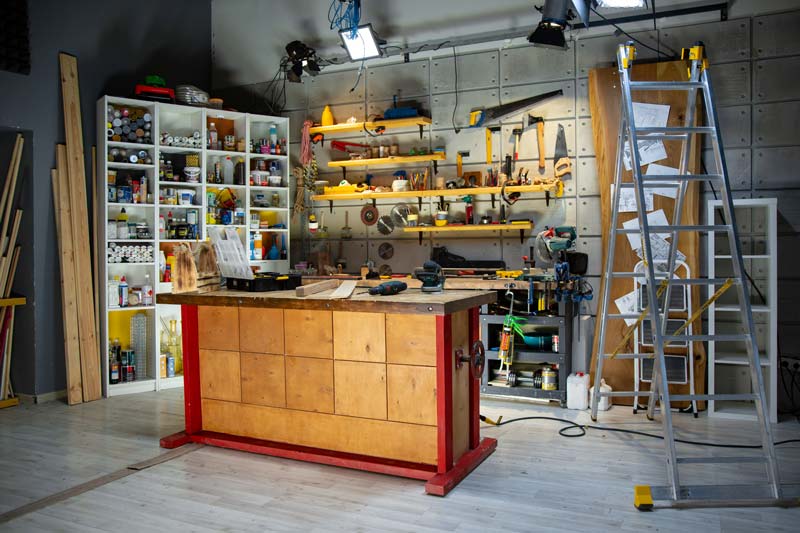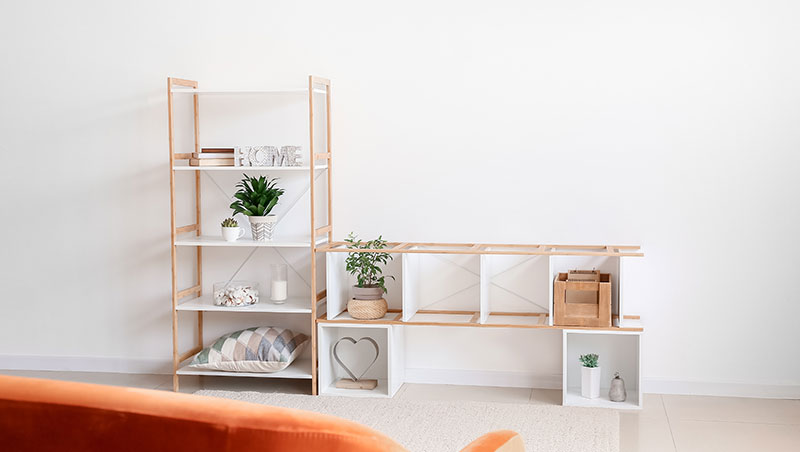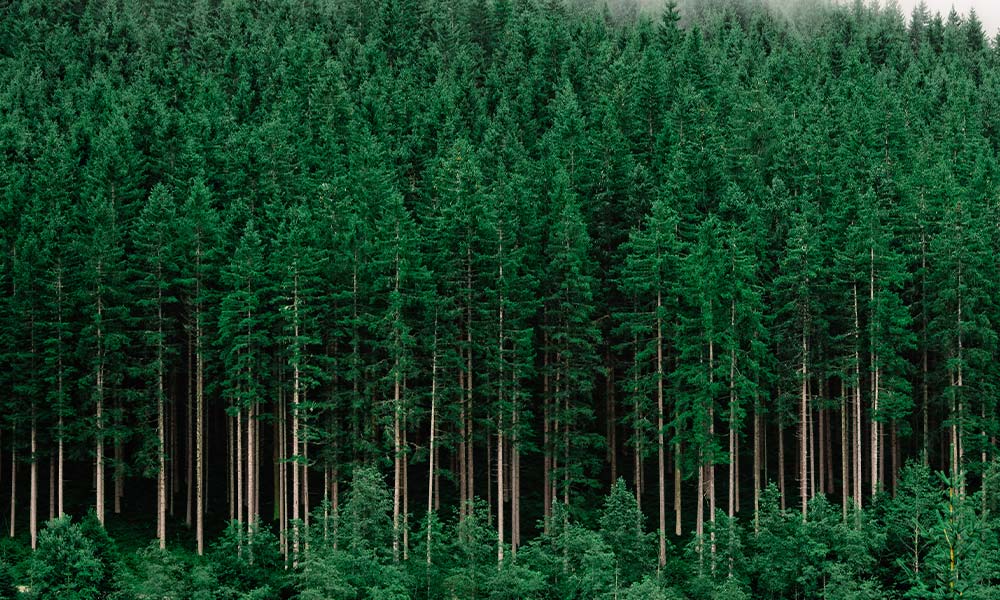What is the best wood for shelving? (and why)
The best wood for shelving is a common question, especially when there are more than 600 different types of wood in the world.
We earn a small commission when you buy through links. Learn More

The best wood for shelving is a common question, especially because the most popular type of shelving units – wooden closets and shelves are all made from wood. We also have to keep in mind that there are more than 600 different types of wood in the world, so choosing one can be difficult. This is why we are here to help.
Best Woods (TLDR)
Best for closets: Pine, cedar and oak
Best for cabinets: Pine, cedar and fir
Best for heavy use: Oak or cedar
Best for wall-mounted shelves: Maple or oak
Other woods to consider: hickory, mahogany, castor bean wood and others.

What Makes a Good Shelf?
A good shelf should be:
- strong enough to hold heavy items – lots of modern homes are filled with all sorts of electronic devices, books you don’t plan on reading again, clothing you haven’t worn in years, stuff you no longer use but can’t bring yourself to throw away. You want a strong shelf that will be able to hold all your stuff and won’t hurt your back when you’re trying to move it around;
- easy to install – time is money, you don’t want to spend hours building shelves if you can avoid it.
- resistant to water – you’ll have all sorts of water bottles on your shelves, but also some electronics and books. And let’s not forget about cleaning liquids and such;
- high quality – at the end, we would like our shelf to last for some time (of course, with a good maintenance routine).
- not difficult to repair – no one likes working with wood, but if you have to fix or modify your shelf, it would be best if this wood was easy to work with.

Which Type of Wood for Shelving is Best?
The simplest way to understand what type of wood to use on your shelves would be to divide them into two groups: softwood and hardwood.
Wooden shelves made of softwoods are often cheaper than hardwoods, but they’re not as strong.
They also grow faster (which means that tree-friendly policies have to take this into account). They don’t have as many colors and textures available. Generally, softer woods will contain more knots and other defects which affect the quality. They’re easier to work with but require more maintenance.
Wooden shelves made of hardwood are usually more expensive and you need them if you want a strong shelf that won’t rot or discolor over time and will be easy to clean and maintain. However, like any other good thing in life, they’re not perfect either.
Hardwood can give you a lot more problems and require additional polishing and maintenance because they’re much softer than the cheaper hardwood varieties.
Wooden shelves made of softwoods are commonly used for: coffee tables, kitchen cabinets, bathroom cabinets, nursery dressers and other forms of furniture.
Hardwood is mostly used for desks, tables, chairs and other large pieces of furniture.
Best Wood for Basic Household Shelves
For most household projects, the best wood for shelves is considered to be pine, cedar and oak. Pine examples include:
- fir – for accents;
- pines such as white pine, sugar pine and redwood. Redwood usually isn’t used for entire shelves but rather as a veneer or to accentuate other parts of the shelf.
Wooden shelves made of pine are usually considered best for closets and cabinets because they’re very durable, cheap, easy to work with and often off-white or colorless (though staining can fix that).
Pine holds up well against moisture, but it’s much more brittle than oak or cedar. If you make a shelf with pine and an item falls on it, the shelf is more likely to break than anything else.
Wooden shelves made of cedar are very durable and resistant to water. They’re also easy to work with compared to other varieties of wood. Cedar can hold up against most household chemicals (it’s usually used in closets), but it can still get discolored and stained, so you have to take care of it.
Cedar is also considerably more expensive than pine, but prices are gradually coming down over time as there’s a larger demand for this wood.
Best Wood for Medium-Duty, Narrow Shelves
If you’re looking for a medium-duty shelf that will hold up to daily wear and tear, the best wood for shelves is considered to be fir.
Fir is usually used as an accent wood in less expensive furniture such as closets and kitchen cabinets; it’s not particularly strong or durable by itself but does make nice shelves when used in conjunction with other hardwoods.
Best Wood for Heavy-Duty, Wide Shelves
If you want a strong shelf that can hold up to any abuse, the best wood for shelves would be oak (or once more time, cedar).
Oak and cedar are both very strong broadleaves and they’re used in numerous furniture projects. They’re both easy to work with, though oak is considered easier to work with than cedar.
Oak usually has a beautiful grain that begs for staining and finishing. Cedar often contains knots that may not come out when stained, but they can be sanded down or worked around if you take your time.
Best Wood for Heavy-Duty, Wall-Mounted Shelves
If you want a shelf that can support almost any weight and is built to last, the best wood for shelves would be maple.
What else?
Other than these leading three species of hardwoods (oak, cedar and pine), there are also other varieties of woods available for cabinets and closets: castor bean wood from Africa, which is beautiful, but hard to work with; mahogany from South America, which is commonly used in pretty cabinets and other furniture; hickory, which has a great grain pattern, but it’s not the easiest wood to sand down.
If you want a shelf that will be able to withstand almost any weight without breaking or getting damaged, cedar is a good option.
Cedar has an average tensile strength of around 3,000 pounds per square inch or psi. This means that you could place three tons of weight on one shelf and it wouldn’t budge. The only downsides are that it’s more expensive than pine and requires quite a bit of maintenance to keep it clean and beautiful.

In Conclusion
Shelves are not difficult to make. As with all woodworking projects, the best hardwood for shelves is dependent on what you want from it and how much you’re willing to pay for it.
If you have a small budget, pine will do the trick. It’s easy to work with and durable enough to hold up against daily use.
If you have a larger budget and want something that will last for years without needing any maintenance at all, cedar is the best wood for shelves.
